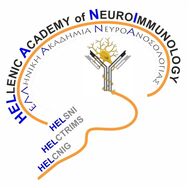Brain Volume
In a healthy individual, brain volume depends on gender, age and various genetic factors. Studies have shown that male brain is bigger than the female. Brain volume grows fast in the first year after birth. In the mature adult life, brain volume decreases with a rate of about 0.3% per year, while after the age of 70, the rate of brain volume loss is greater. The size of the brain does not relate to the intelligence of any individual.
Multiple studies have shown that in multiple sclerosis, the rate of brain volume loss is increased. Brain volume loss is more obvious in late stages of the disease and in the progressive forms of the disease, but new neuroradiological technics (i.e. SIENA) can detect changes in brain volume in the early stages of the disease. Brain volume loss is related to the severity of clinical implications, course of the disease and patient’s social and occupational functioning. Newer pharmacologic therapies aim to the reduction of brain volume loss.
References:
1. Peters, R. "Ageing and the brain". ncbi.nlm. National Institutes of Health.
2. Radue, E.-W., Barkhof, F., Kappos, L., Sprenger, T., Häring, D. A., de Vera, Cohen, J. A. (2015). Correlation between brain volume loss and clinical and MRI outcomes in multiple sclerosis. Neurology, 84(8), 784–793.
3. Tsivgoulis, G., Katsanos, A. H., Grigoriadis, N., Hadjigeorgiou, G. M., Heliopoulos, I., Kilidireas, C., & Voumvourakis, K., Papathanasopoulos, P. (2015). The Effect of Disease Modifying Therapies on Brain Atrophy in Patients with Relapsing-Remitting Multiple Sclerosis: A Systematic Review and Meta-Analysis. PLoS ONE, 10(3), e0116511.
4. De Stefano N, Airas L, Grigoriadis N, Mattle HP, O'Riordan J, Oreja-Guevara C, Sellebjerg F, Stankoff B, Walczak A, Wiendl H, Kieseier BC Clinical relevance of brain volume measures in multiple sclerosis. CNS Drugs. 2014 Feb;28(2):147-56
